PF Coupler ZNDC — Technical Guide, Specifications, and Application Notes
The PF Coupler ZNDC is a one-way pneumatic quick coupler featuring an integrated automatic open/close valve. Engineered primarily for compressed air distribution, hose connections for pneumatic tools, and factory air lines, this coupler provides reliable, smooth plug/socket engagement and a fail-safe shut-off when disconnected. Offered in multiple materials (ZnDC chrome-plated, steel, and brass) and three nominal thread sizes (PF 20 / PT 1/4, PF 30 / PT 3/8, PF 40 / PT 1/2), the PF Coupler ZNDC is a versatile component for medium-duty industrial and workshop pneumatic systems.
Introduction
Quick-disconnect couplers are essential components in compressed air systems, enabling operators to rapidly connect and disconnect tools, test rigs, and distribution lines without shutting down a whole network. The PF Coupler ZNDC represents a class of one-way (unidirectional) couplers with an internal automatic shut-off valve that isolates the distribution line when a plug is removed. This technical article explains the design, performance characteristics, selection criteria, installation practices, maintenance regimes, and comparisons to alternative couplers to help engineers, maintenance technicians, and purchasing professionals make informed decisions.
Technical Overview
The PF Coupler ZNDC is a unidirectional quick coupler designed with an internal valve integrated into the coupling body. When the mating plug is inserted, the valve automatically opens allowing flow. When the plug is withdrawn, the valve re-closes to isolate the supply line. This behavior helps prevent system depressurization, fluid spillage, and contamination ingress during tool changes.
Key functional attributes:
- One-way (unidirectional) flow: The built-in valve opens only when a properly matched plug is inserted, keeping the supply side closed when disconnected.
- Automatic shut-off: Valve actuates automatically on coupling/disconnection without the need for external levers or manual closure.
- Smooth engagement: Precision-machined components and chrome plating on ZnDC variants reduce friction and wear for reliable plug/socket mating.
- Material options: ZnDC (zinc die-cast with chrome plating), carbon steel (plated or passivated finish), and brass; selection is based on mechanical strength, corrosion resistance, and fluid compatibility.
- Multimedia compatibility: Suitable for compressed air, water, and oil within the stated pressure and temperature ranges.
The PF series is commonly used for general factory air distribution, tool hookups in production lines, paint booths (air supply only), test benches, and mobile service carts. The one-way design reduces the risk of depressurizing downstream segments when disconnecting tools and helps maintain safety in production environments.
Operating Characteristics
- Working pressure: 0–150 PSI (0–990 kPa)
- Working temperature: 32–140 °F (0–60 °C)
- Compatible media: Air, water, and oil (within temperature and pressure limits)
- Available models & thread sizes: PF 20 (PT 1/4), PF 30 (PT 3/8), PF 40 (PT 1/2)
Specifications and Dimensions
The following table summarizes the principal mechanical and hydraulic attributes of the PF Coupler ZNDC family. Dimensions, weights, and flow capacities are representative values obtained from typical parts in this class. Always confirm exact product drawings from the manufacturer before designing fixtures or fixtures into assemblies.
| Model | Thread (PT) | Nominal Port Size | Overall Length (mm) | Outer Diameter (mm) | Free Bore (mm) | Approx. Weight (g) | Approx. Cv | Approx. Free Flow at 100 PSI | Material / Finish |
|---|---|---|---|---|---|---|---|---|---|
| PF 20 | PT 1/4 | 1/4″ nominal | 45 | 18 | 5.5 | 65 | 0.40 | ≈9 SCFM (≈255 L/min) | ZnDC (chrome), Steel (plated), Brass |
| PF 30 | PT 3/8 | 3/8″ nominal | 55 | 21 | 8.0 | 105 | 0.75 | ≈19 SCFM (≈538 L/min) | ZnDC (chrome), Steel (plated), Brass |
| PF 40 | PT 1/2 | 1/2″ nominal | 70 | 27 | 12.0 | 155 | 1.20 | ≈36 SCFM (≈1,019 L/min) | ZnDC (chrome), Steel (plated), Brass |
Notes:
- Dimensions in the table are nominal typical values for the PF series couplers; individual manufacturer drawings should be referenced for installation clearance and CAD modeling.
- Cv (flow coefficient) is an approximate value intended to help in sizing and comparing components. Actual flow depends on upstream/downstream piping geometry and installed flow restrictions.
- Free flow numbers are approximate at 100 PSI inlet with atmospheric discharge and represent a practical expectation when the mating plug fully opens the valve.
Materials and Build Quality
Material selection is fundamental to the operational life and application fit of a pneumatic coupler. The PF Coupler ZNDC is offered in three typical material choices: ZnDC (zinc die-cast with chrome plating), carbon steel (with protective plating), and brass. Each material brings tradeoffs in strength, wear resistance, corrosion resistance, and cost.
ZnDC (Zinc Die-Cast) — Chrome-Plated
Zinc die-cast (ZnDC) bodies are a cost-effective choice for general-purpose couplers. The die-cast process allows fine geometric detail, economical production runs, and consistent tolerances. Chrome plating over ZnDC offers several practical advantages:
- Corrosion resistance: Chrome plating reduces surface oxidation and helps maintain a smooth surface finish to ease coupling action.
- Wear resistance: Chrome improves abrasion resistance compared to bare zinc, increasing life under repeated connect/disconnect cycles.
- Smooth engagement: Low friction surfaces reduce operator force and minimize facet wear on mating plugs.
Limitations: ZnDC components remain softer than steel or brass and can be susceptible to mechanical deformation under high impact or repeated mechanical abuse. Chrome plating must be defect-free to provide optimal corrosion protection; severe chemical exposure or abrasion can breach the plating and expose the base alloy.
Steel (Carbon Steel, Plated)
Steel-bodied couplers are chosen for high mechanical strength and durability in robust industrial environments. Typically, carbon steel couplers are plated (e.g., zinc or nickel) to improve corrosion resistance. Advantages include:
- Mechanical robustness: Increased resistance to impact, torque, and compressive loads compared to ZnDC and brass.
- Long life under cyclic mechanical loads: Better fatigue resistance for applications with frequent connecting/disconnecting cycles.
Limitations: Even plated steel can corrode when coatings wear or in aggressive environments (salt spray, acidic condensates). Where high corrosion resistance is required, stainless steel (not listed as standard for PF ZNDC) or brass may be preferable.
Brass
Brass variants are often selected where corrosion resistance against water and some oils is primary, and when galvanic compatibility with mating brass components is desired. Advantages of brass include:
- Corrosion resistance: Excellent resistance in common aqueous and low-acidity environments.
- Non-sparking: Brass is safer than steel in certain flammable atmospheres (note: not a substitute for explosion-proof-certified components).
- Ease of machining: Fine threads and surfaces achievable with brass stock.
Limitations: Brass is generally softer than steel and may deform more easily under impact or torsional loading. For very high-pressure or heavy-mechanical duty applications, steel may be preferable.
Seals, Springs, and Internal Components
Sealing elements for PF Coupler ZNDC are typically elastomeric O-rings and lip seals manufactured from nitrile rubber (NBR) or a similar elastomer compatible with compressed air, water, and mineral oils. For extended service life or compatibility with synthetic oils, fluorocarbon (FKM/Viton) seals may be offered as alternatives. Internal springs for valve return are made from corrosion-resistant spring steel or stainless steel in premium variants to maintain valve actuation reliability.
Key Features (Detailed)
- Integrated One-Way Valve: Built-in automatic open/close valve in the coupler body prevents flow when the plug is removed. This isolates the supply or tooling side depending on system layout.
- Smooth Plug/Socket Engagement: Precision-turning and chrome plating on ZnDC variants reduce friction and ensure consistent mating force across cycles.
- Robust Pressure Rating: Rated for up to 150 PSI (990 kPa), adequate for most general-purpose pneumatic tools and distribution lines.
- Material Selection: Choice of ZnDC (chrome), steel (plated), or brass to suit mechanical and environmental requirements.
- Multi-Media Use: Suitable for compressed air, water, and oil (verify seal compatibility for specific oils and temperatures).
- Compact Form Factor: Small overall length and diameter enable installation in tight tool holder arrays and portable tool reels.
- PT Thread Options: Available in PT 1/4, PT 3/8, PT 1/2 thread sizes for compatibility with common piping standards (PT thread is a JIS designation similar to BSPT).
Use Cases and Applications
The PF Coupler ZNDC is well-suited to a broad spectrum of industrial and commercial pneumatic use cases. Below are typical application scenarios where the PF Coupler’s unidirectional shut-off and compact design provide practical benefits.
Factory Air Distribution
In manufacturing facilities, distribution headers often feed multiple branch lines and tool blocks. Installing PF Coupler ZNDCs at branch endpoints or tool stations allows operators to change tools without depressurizing the entire distribution loop. The one-way shut-off prevents air loss and maintains pressure for adjacent machines.
Tooling and Assembly Lines
Handheld pneumatic tools (impact wrenches, grinders, riveters) benefit from quick connections. The PF series minimizes downtime during tool swaps while the automatic valve prevents line blow-down and potential oil/air mist escape that could contaminate parts or processes.
Maintenance Carts and Mobile Service Equipment
Portable air hoses on service carts require quick-connects that can be reliably stowed and reconnected. The PF Coupler ZNDC’s compactness and automatic shut-off reduce the risk of accidental hose discharge when reconnecting on a vehicle or a machine.
Test Benches and Instrumentation
When multiple pneumatic tests or calibrations are performed, test rigs frequently need to switch between different devices under test (DUT). Maintaining isolated pressures during swaps ensures test repeatability and reduces the need for re-pressurization cycles, saving cycle time.
Water and Light Oil Services
Provided seal materials are compatible, PF Couplers can be used for low-pressure water lines and hydraulic oil bleed lines in maintenance contexts. Note that temperature, fluid chemistry, and particulate levels should be assessed before selection — brass or plated steel options may be preferable in aqueous environments to reduce corrosion risk.
Comparison with Similar Pneumatic Couplers
To help select the most appropriate coupler for a given system, the table below compares the PF Coupler ZNDC with representative alternative coupler types: a universal ISO A coupler, a high-flow ISO B coupler, and a stainless steel one-way coupler. This comparison highlights differences in flow capacity, shut-off behavior, material robustness, and typical best-fit applications.
| Feature | PF Coupler ZNDC (One-way) | ISO A / Universal Coupler | ISO B / High-flow Coupler | Stainless Steel One-way Coupler |
|---|---|---|---|---|
| Shut-off Type | Built-in one-way automatic valve (supply isolation) | Often non-shut-off or both sides open depending on design | High-flow, usually non-shut-off or two-way variants | One-way automatic valve, corrosion-resistant |
| Typical Flow (100 PSI) | PF 20: ~9 SCFM; PF 30: ~19 SCFM; PF 40: ~36 SCFM | Varies; typical medium flow ~20–30 SCFM | High flow >40 SCFM (larger bore) | Comparable to PF sizes; flow depends on bore but chosen for corrosive environments |
| Materials | ZnDC (chrome) / Steel / Brass | Brass, steel, or nickel-plated | Steel or brass with larger bores | Stainless steel (AISI 316 or 304) |
| Best Use | General-purpose tool hookups; supply isolation | General service where compatibility with multiple plug types is desirable | High-demand pneumatic systems (large tools, fast actuators) | Corrosive or hygienic environments (food, marine, chemical) |
| Cost | Moderate (ZnDC is economical) | Moderate | Higher (bigger bores, more material) | Highest (material cost of stainless steel) |
Benefits and Limitations — Technical Perspective
Understanding tradeoffs is essential when specifying couplers for engineered systems. Below is a balanced analysis of the PF Coupler ZNDC’s advantages and constraints.
Benefits
- Operational safety: The automatic shut-off valve helps reduce accidental depressurization and the release of pressurized air, limiting hazards and noise during tool changes.
- Reduced downtime: Quick-connect action enables faster tool swaps and maintenance tasks, improving throughput in assembly and repair processes.
- Compact and lightweight: Low-profile geometry reduces clearance issues in dense tool arrays and tooling carts.
- Material flexibility: Choice of ZnDC, steel, or brass enables selection for cost, strength, or corrosion-resistance priorities.
- Multi-media compatibility: Works with air, water, and oils (with appropriate seal selection), enabling multi-purpose utility in maintenance shops and test setups.
Limitations
- Flow restriction relative to high-flow couplers: Due to the integrated valve and nominal bore sizes, PF series couplers have lower maximum unrestricted flow than dedicated high-flow couplers; this can limit tool performance where maximum volumetric flow is required.
- Temperature constraints: Typical elastomer seals limit continuous use to 0–60 °C (32–140 °F). Higher-temperature applications require specialized seal materials (e.g., FKM, PTFE).
- Material tradeoffs: ZnDC variants are more affordable but less robust than steel or stainless steel under mechanical abuse and certain chemical exposures. Corrosive environments favor brass or stainless steel (latter may not be a standard option for PF ZNDC without custom order).
- Not inherently universal: PF thread (PT) compatibility must be matched to piping standards; adapters or thread conversion may be necessary when interfacing with NPT or other thread standards.
Selection and Sizing Guidelines
Selecting the correct PF Coupler ZNDC model for a given application requires assessing flow demand, pressure, environmental conditions, and compatibility with existing fittings and hose sizes.
- Assess flow requirements: Estimate volumetric demand of the tool or circuit (SCFM or L/min). For intermittent hand tools, PF 20 may suffice; for pneumatic grinders or large hammers, PF 30 or PF 40 may be required.
- Check operating pressure: Confirm the system pressure is within 0–150 PSI. For systems approaching the upper limit, verify the manufacturer’s burst and proof pressure ratings if available.
- Material selection: Choose ZnDC for standard shop air and indoor use. Choose brass for aqueous or mildly corrosive environments. Choose plated steel for heavy mechanical duty. For extreme corrosion or hygiene demands, consider stainless-steel couplers (may require special ordering).
- Thread compatibility: Confirm the distribution piping uses PT threads (JIS / BSPT). When interfacing with NPT or BSPP, use compatible adapters to avoid leakages and thread damage.
- Seal material: For general air and light oils, NBR seals are typical. For synthetic oils, higher temperatures, or chemical resistance, specify FKM or other compatible elastomers.
Installation and Commissioning
Correct installation is essential to ensure long-term reliability and leak-free operation. The following professional guidelines will help installers and service technicians integrate PF Coupler ZNDC into distribution systems.
Thread Preparation
- Use PTFE tape or a compatible thread sealant on PT threads where required. Apply tape in the thread lead-in direction to prevent unwrapping during assembly.
- Do not over-apply sealant; excess sealant can enter the air stream and contaminate filters or sensitive equipment downstream.
Tightening and Torque
- Follow recommended torque practices for PT thread sizes. Typical installation torque ranges (indicative):
- PT 1/4: 10–15 N·m
- PT 3/8: 15–25 N·m
- PT 1/2: 25–35 N·m
- Use calibrated torque tools to avoid over-tightening which can crack die-cast bodies or distort brass threads.
Alignment and Support
- Provide hose strain relief to prevent lateral loads on the coupler body. Repeated bending at the joint reduces life and can loosen fittings.
- When mounting to manifolds or fixed piping, ensure the coupler outlet has adequate clearance for mating plugs and for operator access.
System Purge and Leak Test
- After installation, perform a pressure leak check—pressurize to working pressure and apply a soap solution at joints to detect bubbles, or use an ultrasonic/pressure decay test.
- Purge new piping to remove debris from the nominally increased risk of particulate generated during installation.
Maintenance and Care Guide
Routine maintenance extends service life and maintains system uptime. The PF Coupler ZNDC’s maintenance regime is straightforward but essential to ensure leak-free performance and to avoid accidental tool failures.
Daily/Weekly Checks
- Visually inspect couplers for obvious damage, burrs, or cracking, particularly on ZnDC parts that may be subject to impact.
- Check that plugs insert smoothly and fully seat. Any resistance beyond normal friction may indicate contamination or damaged seals.
Monthly Maintenance
- Inspect seals and O-rings for hardening, cracking, or extrusion. Replace worn elastomers immediately.
- Clean coupler bodies and mating plugs with a lint-free cloth and an appropriate solvent that does not swell or degrade the seals (use isopropyl alcohol for NBR seals; avoid harsh solvents for certain seal compounds).
- Verify that retaining rings and valve springs are secure and free from corrosion.
Annual or Duty-Dependent Maintenance
- Schedule a more detailed teardown if the coupler experiences heavy usage (e.g., >10,000 cycles/year). Inspect internal valve seats, balls/pistons, springs, and seals, and replace per manufacturer spare parts lists.
- If corrosion is detected on plated surfaces or visible pitting in ZnDC, evaluate the environmental cause and consider switching to brass or stainless steel variants.
Spare Parts and Replacements
Typical spare parts to keep on-hand include O-rings (NBR and premium FKM options), valve springs, valve seats, retaining rings, and optionally complete coupler bodies. Use manufacturer-specified parts to maintain pressure and safety ratings.
Troubleshooting Guide
Common performance issues and pragmatic troubleshooting tips follow:
Issue: Air Leakage at Threaded Joint
Possible causes:
- Insufficient thread sealant or improperly applied PTFE tape.
- Damaged or cross-threaded fitting.
Action:
- Depressurize system, remove coupler, clean threads, reapply PTFE tape correctly, and reinstall to recommended torque.
- If thread damage is present, replace the coupler or use a qualified repair method; do not rely on excessive sealant to mask thread defects.
Issue: Valve Fails to Open When Plug Inserted
Possible causes:
- Foreign debris lodged in valve seat.
- Broken or weakened valve spring.
- Plug wear or damaged plug geometry not engaging the valve mechanism.
Action:
- Depressurize and inspect the valve bore for debris; flush with clean air or solvent compatible with seals. Replace seals if necessary.
- Replace internal spring or valve assembly per manufacturer instructions.
Issue: Excessive Disconnection Blow-Back
Possible causes:
- Downstream pressure differentials and trapped volumes causing sudden discharge when disconnecting.
- Valve sticking due to contamination or inadequate lubrication.
Action:
- Bleed off downstream trapped pressure before disconnecting when possible.
- Service the valve with manufactured-approved cleaning and replace worn parts.
Compatibility and Interfacing Notes
The PF Coupler ZNDC uses PT thread sizing (a JIS designation closely related to BSPT). When integrating into piping systems using different thread standards (NPT, BSPP), be sure to use properly rated adapters. Adapters can introduce flow restrictions or leak points — minimize adapter use where possible to preserve flow and reliability. Additionally, verify mating plug compatibility. Not all couplers are cross-compatible with international quick-fit standards; mechanical fitment and valve actuation geometry must match.
Regulatory and Safety Considerations
When selecting components for pressurized systems, comply with local pressure equipment regulations and industry standards governing compressed air safety. Although PF Coupler ZNDC is designed for typical industrial compressed air service up to 150 PSI, ensure:
- Pressure relief and regulation devices are installed in the distribution network where combined sections of piping may exceed safe volumes.
- Personnel are trained in safe coupling/disconnecting practices and wear appropriate personal protective equipment (PPE) where noise, pressure, or particulate risk exists.
- Any application involving flammable atmospheres consults safety engineering; standard couplers are not substitutes for explosion-proof or intrinsically safe components.
Procurement Checklist
Before ordering PF Coupler ZNDC units, confirm the following:
- Required model (PF 20, PF 30, PF 40) based on flow and hose size compatibility.
- Preferred material (ZnDC chrome-plated, plated steel, or brass) consistent with the operating environment.
- Seal material (NBR, FKM, or other) appropriate for the media (air, water, specific oils) and temperature.
- Thread type and required adapters (PT, NPT, BSPP compatibility).
- Quantity and spare parts required for inventory (o-rings, valve springs, complete couplers).
Case Study: Implementing PF Coupler ZNDC on an Assembly Line
A mid-sized automotive subassembly plant experienced frequent downtime during tool swaps on an assembly cell. Each swap required a short depressurization event affecting adjacent stations. After evaluating options, the plant installed PF Coupler ZNDC sockets at each tool station (PF 30 for most tool hoses) and standardized all tool plugs to match the PF system.
Results:
- Average tool swap time decreased by 45% since operators no longer needed to shut-down the line segment to change tools.
- Air consumption losses from accidental disconnections were reduced by an estimated 30% annually.
- Unplanned stops due to pressure loss on adjacent stations dropped significantly, resulting in improved line availability.
Lessons learned included ensuring spare seal kits were stocked and scheduling periodic inspections after the first 6 months to identify any wear patterns under the plant’s specific cycle rates.
Conclusion
The PF Coupler ZNDC is a practical, cost-effective one-way pneumatic coupler suitable for a wide range of compressed air applications where supply isolation during disconnect is desirable. With multiple material options (ZnDC chrome-plated, steel, brass) and three convenient thread/port sizes (PF 20/PT 1/4, PF 30/PT 3/8, PF 40/PT 1/2), the PF series provides flexibility for general factory air distribution, tooling hookups, and mobile service applications. Its integrated automatic shut-off valve enhances operational safety and minimizes downtime during tool exchanges. However, users should carefully consider flow requirements, environmental corrosion factors, and seal compatibility when specifying the PF Coupler ZNDC to ensure long-term reliability.
For accurate integration into engineered systems, always refer to the manufacturer’s detailed drawings, pressure and burst ratings, and recommended spare parts lists. When applied and maintained correctly, PF Coupler ZNDC units provide a robust, compact solution for everyday pneumatic connectivity needs.
Appendix: Quick Reference Data
| Parameter | Value |
|---|---|
| Working Pressure | 0–150 PSI (0–990 kPa) |
| Working Temperature | 32–140 °F (0–60 °C) |
| Media | Compressed air, water, oil (verify seals) |
| Models | PF 20 (PT 1/4), PF 30 (PT 3/8), PF 40 (PT 1/2) |
| Material Options | ZnDC (chrome-plated), Steel (plated), Brass |
| Typical Cv Range | 0.4–1.2 (model dependent) |
If you need CAD models, manufacturer-specific drawings, or a tailored selection matrix for high-cycle or harsh environments, contact your supplier or the product manufacturer to obtain certified technical documentation and material safety information sheets.

 Tiếng Việt
Tiếng Việt
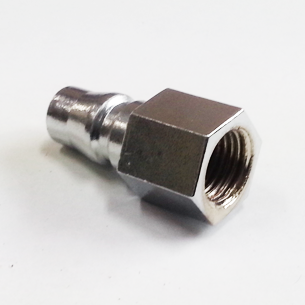
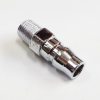
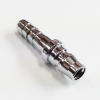
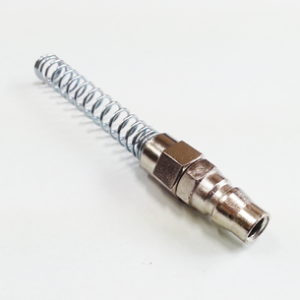
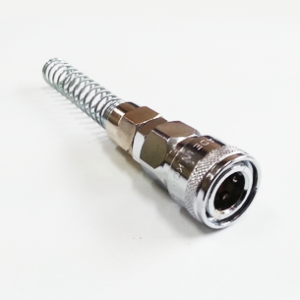
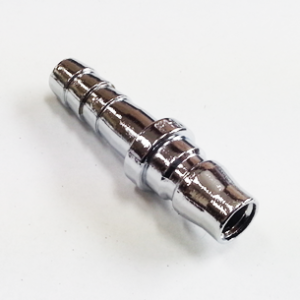
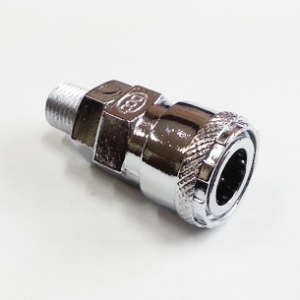
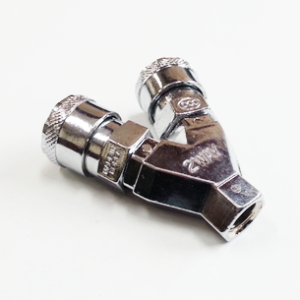
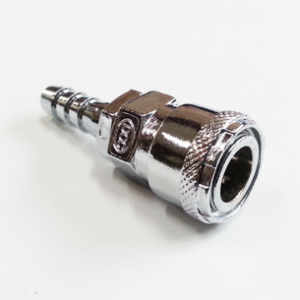
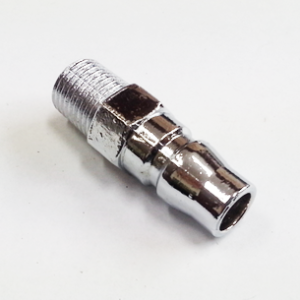
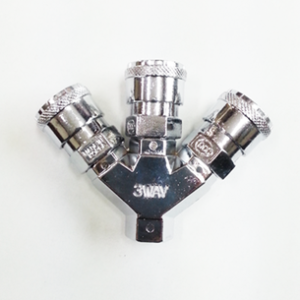
Reviews
There are no reviews yet.